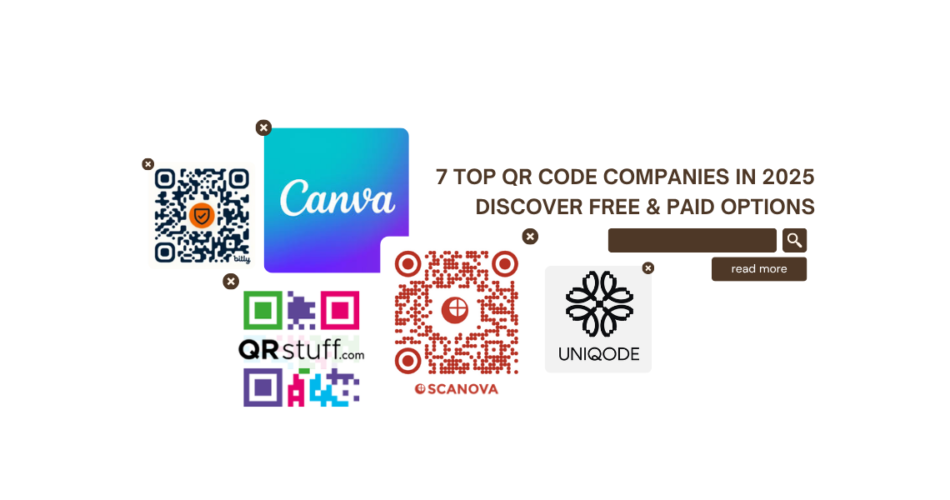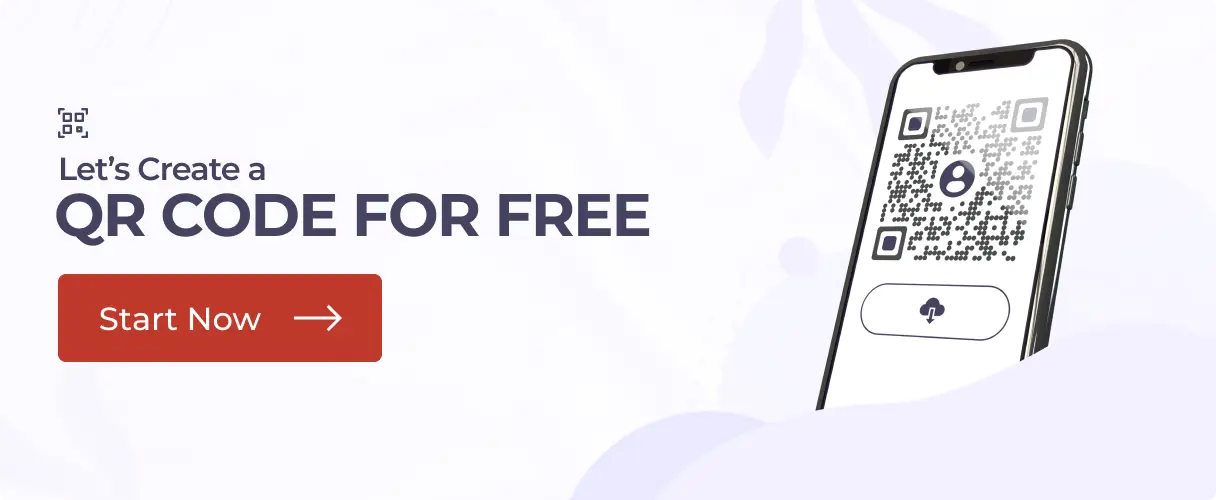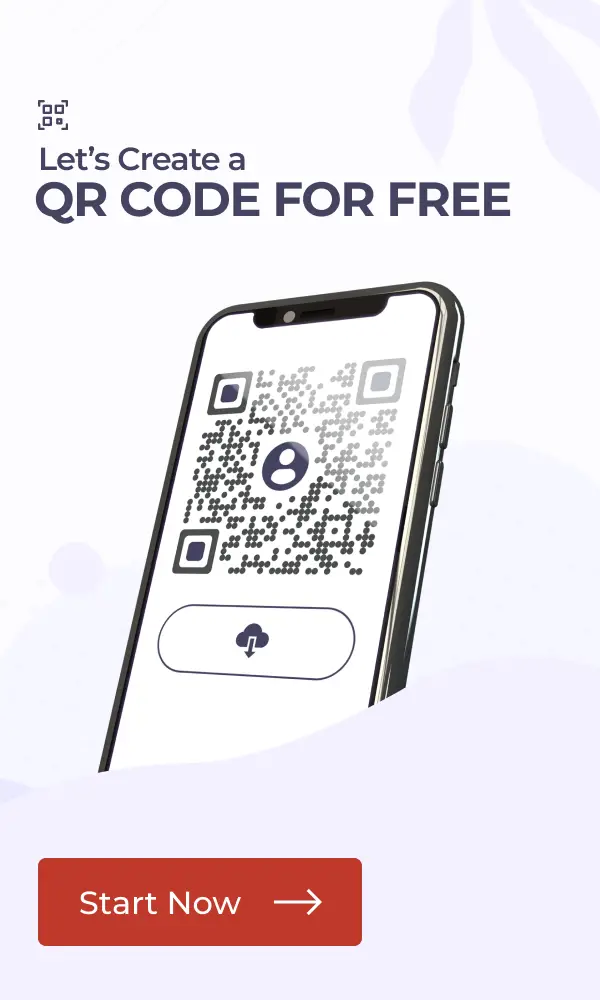In a nutshell: This guide compares the top QR Code platforms for 2025, focusing on free vs. paid plans to help businesses choose the right fit. You’ll get a simple overview of features, pricing, ROI, cost‑per‑scan, and pick the best tool based on budgets and use cases. Free plans suit basic needs. Paid plans unlock design, analytics, integrations, and higher ROI. Scanova tops the list, combining robust features, clear pricing, and strong business value.
QR Codes are everywhere – literally. From ketchup bottles to concert tickets, they’ve exploded by 750% in usage since 2020 (ever since the pandemic).
In 2022 alone, 89 million Americans scanned a QR Code. And no, they’re not just fancy black-and-white squares anymore.
They’re your silent salesperson, lead magnet, digital handshake, and instant info‑drop, all of that rolled into one single scan.
But here’s the catch: Everyone’s making QR Codes. But not everyone’s doing it right.
Some platforms offer basic codes that do the job, barely. Others give you analytics, branding, integrations, and even lead tracking.
So, how do you choose the right one without pulling your hair out (or worse, boring your team into digital limbo)?
Don’t worry. We’ve tested, compared, and broken it down for you, like a friend who actually replies with useful links.
In this guide, we’re lining up the top QR Code companies of 2025, showing you what’s free, what’s worth paying for, and where Scanova fits in (spoiler: right at the top).
Let’s dive in and find the QR platform your brand deserves. Let’s start with the basics.
A. What’s the big deal about QR Codes?
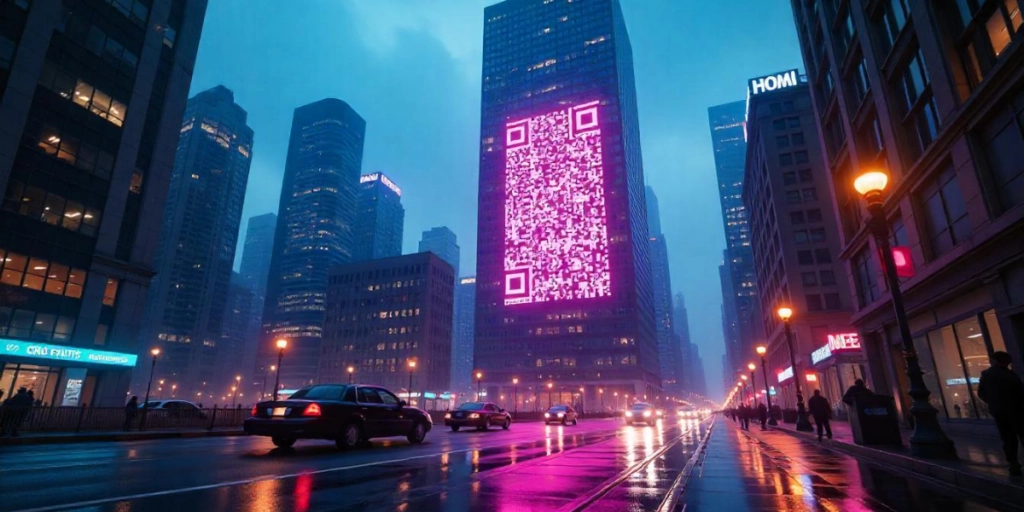
For the uninitiated, QR Codes, or Quick Response codes, represent a sophisticated evolution of traditional barcodes, both in terms of the capacity to store information and functionality.
QR Codes have quietly become the link between the real world and the digital one.
They let your customers scan once, and boom, they’re on your website, watching your promo video, filling out a feedback form, or buying your product. All with zero typing and zero confusion.
Their utility extends across diverse sectors, from marketing initiatives, where they seamlessly connect users to websites, promotions, or product insights, to operational realms, facilitating ticketing, payments, authentication, and inventory management.
And if you’re in business, here’s why you should care:
- They cut the friction between interest and action
- They boost engagement without eating into your budget
- They offer amazing ROI, we’re talking $0.01–$0.05 per scan in most campaigns
- They work for everything: product packaging, event tickets, flyers, receipts, store windows, and even food delivery
You’re not just adding a code. You’re opening a door to something bigger, more conversions, better tracking, and smarter marketing.
So yeah, these pixelated portals are not “nice-to-have” anymore. They’re a must-have in the digital playbook.
Whether you’re a solo creator, startup founder, or marketing lead at a big brand, QR Codes are the easiest, cheapest way to bridge offline moments to online action.
Let’s help you find the best platform to do exactly that.
B. Comparing the 7 Best QR Code companies of 2025
With QR Codes becoming essential tools for marketing, logistics, and customer engagement, it’s important to choose the right platform. But here’s the thing: Not all QR Code generators are created equal.
Some are great for beginners. Others are designed for marketers who need deep analytics and design control. And then there are enterprise-grade platforms built for scale, security, and integration.
We’ve compared 7 leading QR Code companies and rated them across 5 core parameters:
- Pricing (How affordable and flexible their plans are)
- General Features (Ease of use, design tools, dynamic/static code creation)
- Advanced Features (Analytics, CRM/API integrations, tracking)
- Niche Features (Unique use cases like audio codes, feedback forms, etc.)
- Expert Score (Overall market reputation, brand trust, versatility)
So let’s get straight to it and have a closer, more detailed look at each:
1. Scanova QR Code Generator – Best Overall (5/5)
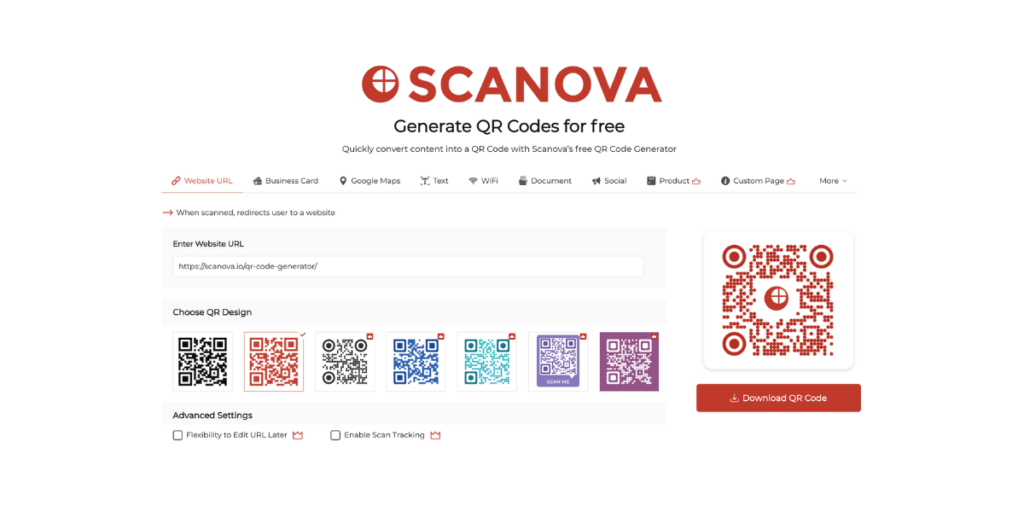
If you’re looking for a well-rounded, professional QR Code platform that does more than just generate links, Scanova is the top pick.
Why it stands out: Scanova combines deep customization, advanced features, and ease of use. It’s perfect for both beginners and large teams.
It offers the ability to customize QR Codes with colors, logos, and design elements, enhances brand visibility, and ensures a tailored, professional appearance. But it goes way deeper than that.
Scanova offers seamless integration with other platforms and tools, streamlines workflows, enhances efficiency, and ensures a cohesive approach to marketing efforts.
Robust analytics features provide valuable insights into user engagement, allowing for data-driven adjustments to marketing strategies.
You also get features like QR landing pages, campaign analytics, API support, bulk generation, and SOC2/GDPR compliance.
Best for:
- Marketing teams
- Enterprise use
- Agencies running QR-based campaigns
Pros:
- Fully customizable QR Codes
- Powerful campaign analytics
- Works at scale with teams and integrations
- Reliable support and strong security
Cons:
- Advanced features are only available in paid plans
Scorecard:
- Pricing: 4.5/5 (Check Scanova’s pricing details here)
- General Features: 5/5
- Advanced Features: 5/5
- Niche Features: 5/5
- Expert Score: 5/5
Bottom line: Scanova gives you everything – from design to delivery to data – all in one dashboard.

Here’s what Scanova’s customers think about them:
“The simplicity of this tool makes it easy for even non-tech users.”
Caitlyn Duffy, PepsiCo
Scanova is a perfect QR Code generator for Dynamic QR Codes. The best part of Scanova is their useful options to generate dynamic QR Codes with brand identity including adding logo, color codes of the brand, etc. Also, they have easy-to-use templates for QR Codes for a quick implementation of any sort of needs.
Muthaian Prakash K, Director, Olam Information Services Pvt. Ltd.
“We have increased our leads by 10x with Scanova.”
Daniela Gutierrez, Hitachi Vantara
We love that Scanova provides us with demographics/location information when we use their QR Codes in a magazine ad. This allows us to gauge interest in multiple distribution areas. Scanova allows us to access data that we can directly correlate with other analytics we have, to help deliver customers with a more accurate ROl on the service.
Marie Zecca, Advisory Board Chair, Colorado Women’s Lacrosse Officials Association (CWLOA)
2. Uniqode (formerly Beaconstac) – Great for Analytics
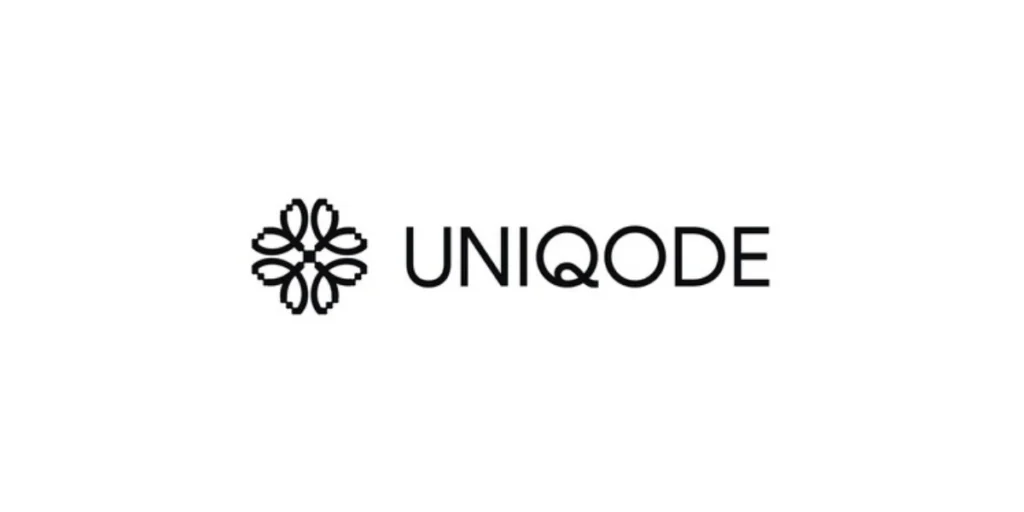
Based in New York, Uniqode is a QR Code generator company renowned for its diverse array of features tailored for businesses. Beaconstac puts analytics and performance at the front and center.
Why it stands out: It gives you the tools to fully brand your QR Codes. You can change colors, add your logo, and pick from a range of design styles to match your brand.
It also comes with strong analytics, you can track where, when, and how people scan your codes, including the device they used. It’s ideal for marketers who want to dive into metrics. You’ll get access to scan heatmaps, device types, location insights, and CRM integrations. It also supports bulk QR creation and offers branded designs.
If you’re worried about security, Uniqode lets you add password protection and set expiry dates to control access. The dashboard is clean and easy to navigate, even if you’re not super tech-savvy.
Best for:
- Data-heavy campaigns
- Marketers who need deep tracking
Pros:
- Advanced analytics dashboard
- High reliability
- Strong API integrations
Cons:
- Slightly higher pricing: Despite its feature-rich offerings, it presents a higher price point compared to other QR Code generators, potentially posing a challenge for smaller businesses or individuals with constrained budgets.
- Limited design flexibility compared to others
- While it offers a plethora of features, it lacks in providing users with monthly plans, which certain competitors, like Scanova, do.
Scorecard:
- Pricing: 3.5/5
- General Features: 4/5
- Advanced Features: 4/5
- Niche Features: 3.5/5
- Expert Score: 4/5
Bottom line: If insights matter more than design, Beaconstac is a solid contender.
3. Unitag – Best for Designers
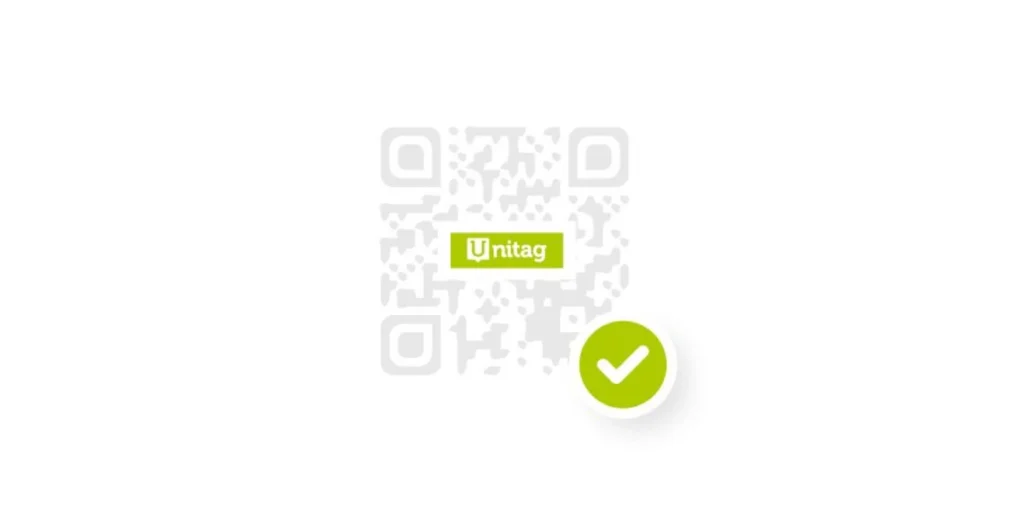
Unitag offers a QR experience that’s focused on visual appeal and creativity.
Why it stands out: With Unitag, you can play around with colors, gradients, shadows, and even 3D-like effects. It’s one of the few platforms where aesthetic customization takes the lead.
The platform supports dynamic QR Codes, which can be updated even after printing. This is particularly useful for changing URLs or other data without generating a new code.
Unitag provides analytics to track QR Code performance as well. Users can monitor scan data such as location, time, device type, and user demographics, essential for assessing the effectiveness of marketing campaigns.
The platform includes security measures like password protection and expiration dates for QR Codes, ensuring that sensitive information is accessed only by authorized users. Designed for ease of use, Unitag is accessible to users of all technical skill levels.
Best for:
- Designers
- Brands wanting beautiful QR Codes
Pros:
- Impressive design control
- Dynamic codes available
- Analytics and editing options
Cons:
- While Unitag offers a free tier, many of its advanced features are only available through paid plans, which might be a concern for smaller businesses or individuals with limited budgets.
- Less intuitive for non-designers. For users with basic QR Code needs, Unitag’s extensive feature set might be overly complex, potentially complicating the user experience.
- Limited niche QR use cases. Despite its user-friendly design, the range of features and customization options can present a learning curve for new users.
Scorecard:
- Pricing: 3.5/5
- General Features: 4/5
- Advanced Features: 4/5
- Niche Features: 3.5/5
- Expert Score: 3.8/5
Bottom line: Unitag is great if your QR Codes need to look stunning on packaging or events.
4. Flowcode – Fast and Simple
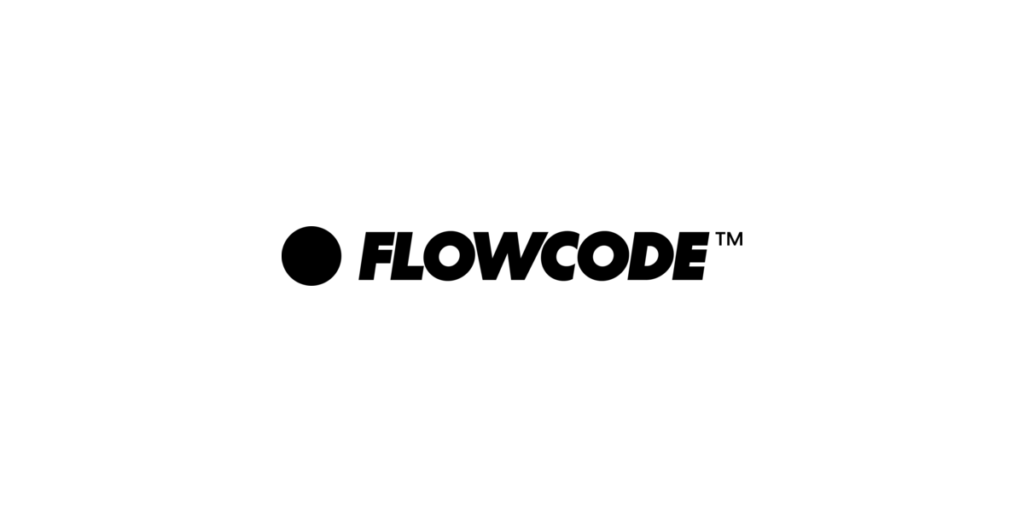
Flow Code simplifies QR Code creation, offering a quick and straightforward solution, making it a convenient option for users seeking efficiency. It is ideal for those who want to set up quick campaigns without overthinking.
Why it stands out: Its strength lies in ease and speed. No complex setup. Just create a basic code, customize a bit, and go live. It offers dynamic codes and some basic analytics.
Flow Code is intuitively designed, enabling users to generate QR codes swiftly without encountering a steep learning curve. It covers essential features necessary for QR code creation, suitable for straightforward applications.
However, it does have notable limitations, particularly for those requiring advanced marketing features, so you have to keep that in mind if you’re every going for it.
Best for:
- Creators and small businesses
- Quick marketing campaigns
Pros:
- Easy to get started
- Affordable plans
Cons:
- Flowcode is not very scalable and has a very limited niche, and advanced options are not available.
- Flow Code provides minimal options for customizing QR Code appearance, which may be restrictive for users aiming to align QR with their brand identity or create visually distinct codes.
- The platform lacks robust event tracking capabilities essential for measuring the effectiveness and return on investment (ROI) of marketing campaigns involving QR codes.
- It does not support lead generation functionalities, hindering efforts to gather user information crucial for building customer databases and executing targeted marketing campaigns.
- It offers limited integration options with other marketing tools and platforms, such as CRM systems, email marketing software, and analytics tools, which are pivotal for a cohesive marketing strategy.
Scorecard:
- Pricing: 4/5
- General Features: 3.5/5
- Advanced Features: 3/5
- Niche Features: 2.5/5
- Expert Score: 3.2/5
Bottom line: Great entry-level tool, but does not grow with your business needs.
5. QR Stuff – Good free tool with paid options
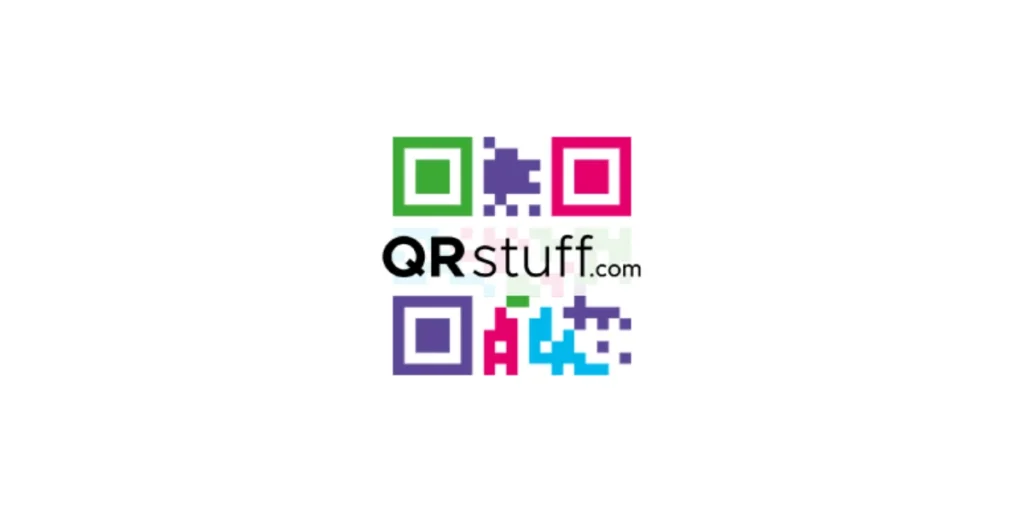
QR Stuff has been around for a while and remains a beginner-friendly tool with a large user base.
Why it stands out: It supports a wide range of content types – from email to Google Maps. The interface is basic but useful. Paid plans unlock more export options and analytics.
Users enjoy the flexibility to customize QR Codes with different colors, logos, and data types, ensuring alignment with their branding preferences.
It offers a basic free plan containing essential features, while premium plans extend to advanced options such as high-resolution downloads, enhanced analytics, and dynamic QR Codes.
The platform offers basic analytics to monitor scan counts, scan locations, and device usage, aiding users in assessing the efficacy of their QR Code campaigns.
Best for:
- Educators, hobbyists
- One-off QR needs
Pros:
- Decent content type support
- Low barrier to entry
Cons:
- Only basic design options are there for the users to explore and use.
- Functionality may not match the comprehensiveness of platforms like Scanova. Users encounter limitations in the scope and detail of tracking features.
- QR Stuff’s integration capabilities are limited compared to some competitors, potentially restricting seamless integration with CRM systems, marketing automation tools, or other software platforms.
- The platform’s feature set, particularly concerning advanced functionalities like API access and bulk QR code generation, is not robust.
Scorecard:
- Pricing: 4/5
- General Features: 3.5/5
- Advanced Features: 3/5
- Niche Features: 2.5/5
- Expert Score: 3/5
Bottom line: A reliable tool for simple needs, but not ideal for marketing-heavy use.
6. Go QR – 100% Free and Basic
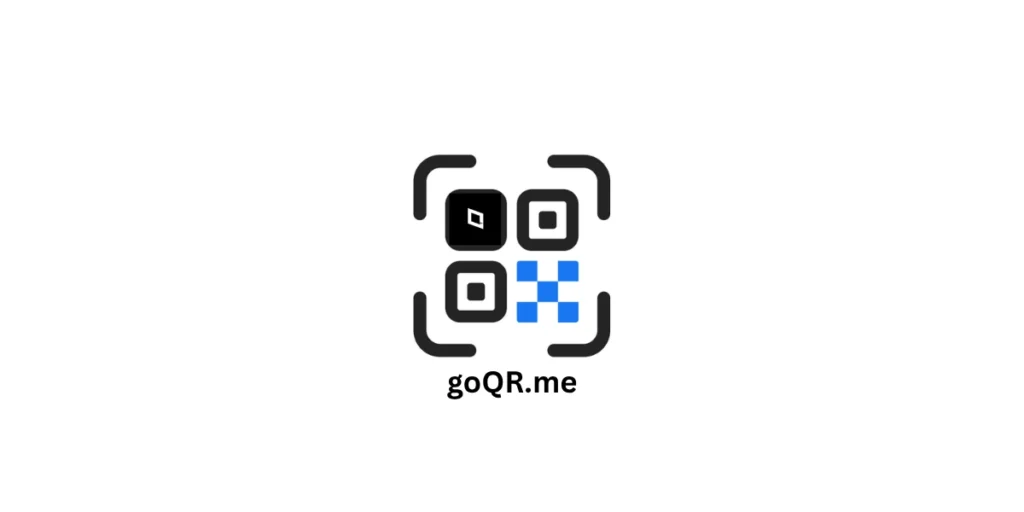
goQR.me is one of the oldest free tools out there and still helps users create QR Codes without logging in.
Why it stands out: It is a no-frills, no-signup platform, just type your content and generate a static QR Code instantly. Good for short-term or basic internal use.
goQR.me offers the creation of various QR Code types, like URLs, text, contact information, phone numbers, SMS, email, Wi-Fi configuration, and more. This versatility renders it suitable for a wide array of applications.
Users have the flexibility to customize their QR codes to a certain extent, including adjustments to colors and the incorporation of logos, aligning the codes with their brand identity.
The platform prioritizes providing expert advice and best practices for QR Code use, aiding users in comprehending how to implement and deploy QR Codes effectively in their marketing and communication strategies.
Best for:
- Students, personal use
- One-off static QR Codes
Pros:
- Simple and free
- No login required
Cons:
- The tool is less user-friendly compared to other QR Code generators. The interface lacks intuitiveness, posing a potential barrier for users seeking a seamless experience.
- No analytics or edits, only offers static one-time QR Codes that cannot be changed or edited.
- goQR.me’s integration capabilities are limited, presenting challenges in connecting with CRM systems, marketing tools, or other software platforms, thereby restricting its utility for businesses reliant on integrated workflows.
- The platform potentially falls short in providing detailed insights into QR code performance, such as scan locations, times, and device types.
- Features such as dynamic QR Codes, bulk generation, and advanced security options may be either limited or absent.
Scorecard:
- Pricing: 5/5
- General Features: 3/5
- Advanced Features: 2/5
- Niche Features: 2/5
- Expert Score: 2.5/5
Bottom line: Quick fix when you just need to generate and go.
7. Canva – For quick visual designs
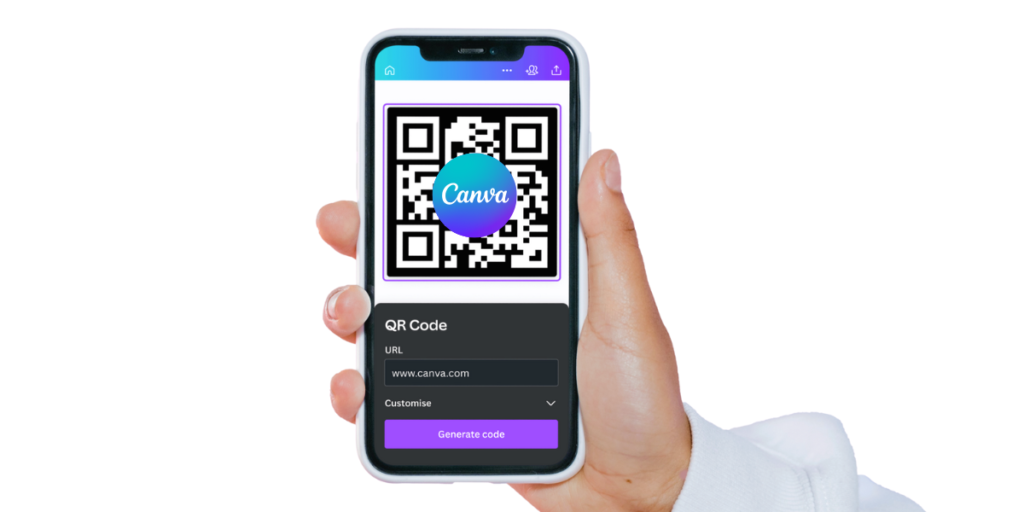
Canva stands out as a favored online design platform, renowned for its user-friendly interface and extensive repository of templates and design elements.
Canva offers a built-in QR Code tool in its design editor, handy for adding QR Codes to posters, flyers, or invites.
Why it stands out: You can quickly embed a link-based QR Code into any Canva design without using a separate tool. It’s drag-and-drop simple and good for quick static needs. But it lacks power under the hood.
Canva facilitates the download of QR codes in popular image formats like JPG and PNG, facilitating their utilization across digital and print media.
Best for:
- Posters, banners, print media
- People already using Canva
Pros:
- Easy for visuals
- Great drag-and-drop editor
- No login needed for basic use
Cons:
- Only static QR Codes – no dynamic editing or redirection feature
- No analytics, tracking, or scan performance data
- No logo or frame customization
- Doesn’t check QR scannability, so QRs may not always work
- No central dashboard to manage or organize codes
- QR Codes get buried inside each design – hard to retrieve later
- Each QR use case (PDF, vCard, URL) needs a separate plugin which is messy to manage
- Not scalable for teams or growing campaigns
- No support for bulk generation, roles, or access control
Scorecard:
- Pricing: 4/5
- General Features: 3/5
- Advanced Features: 1/5
- Niche Features: 1/5
- Expert Score: 2/5
Bottom line: Canva is great when you need to slap a quick QR Code on a flyer. But the downside? It’s not built for managing QR Codes at scale. There’s no dashboard, no dynamic functionality, and no way to update or track your codes. If you need to run campaigns, track performance, or organize multiple use cases, look elsewhere.
The Take:
| Platform | Price | General | Advanced | Niche | Key Pros | Main Cons |
|---|---|---|---|---|---|---|
| Scanova | 4.5 | 5 | 5 | 5 | All‑rounder, brandable, secure | Paid to unlock full features |
| Beaconstac | 3.5 | 4 | 4 | 3.5 | Strong analytics & design | Higher cost, niche limited |
| Unitag | 3.5 | 4 | 4 | 3.5 | Flexible design, dynamic codes | Can be complex, pricey |
| Flow Code | 4 | 3.5 | 3 | 2.5 | Easy & efficient use | Lacks advanced features |
| QR Stuff | 4 | 3.5 | 3 | 2.5 | Broad type support | Less polished design & integration |
| goQR.me | 5 | 3 | 2 | 2 | Fully free, simple | No tracking or niche support |
| Canva | 4 | 3 | 1 | 1 | Quick for design projects | No dynamic or analytics features |
C. QR Code strategy execution: ROI & cost‑per‑scan
1. ROI – Return on Investment
Let’s suppose a mid‑tier SaaS business used Scanova’s mid-range dynamic QR Codes (say $25/mo, although the cheapest plan starts at $5). They ran a QR campaign at events and saw:
- 2,000 scans/month
- 50 new leads monthly → worth ~$1,000/mo
- Cost‑per‑scan = $25 ÷ 2,000 = $0.0125
- Cost‑per‑lead = $25 ÷ 50 = $0.50
ROI = (1,000 − 25) ÷ 25 = 3,900%
Why this matters
- Even simple QR campaigns pay off fast.
- Dynamic codes boost flexibility and extend value beyond prints.
- For large volumes (e.g., packaging), the cost-per-scan drops below $0.005.
2. Affordability, budget & planning
- Small businesses/solo marketers: Start free (Scanova’s free tool, goQR.me, or Canva). Upgrade when you need tracking or branding.
- Mid-size businesses: Choose platforms with clear pricing like Scanova, Unitag, or Beaconstac.
- Enterprises: Scanova gives enterprise‑grade security, integration, and team permissions.
- Planning tips:
- Estimate scan volume (e.g., events, packaging, ads).
- Use the ROI formula:
- Cost ÷ expected scans = cost-per-scan
- (Value-per-lead × leads) ÷ cost = ROI
- Plan budgets large enough to cover paid tiers once you need tracking, API, or design features.
The use of mobile QR Code scanners is expected to grow steadily, surpassing 100 million users in the U.S. by 2025. Source: Statista
D. The growing importance of QR Codes in business
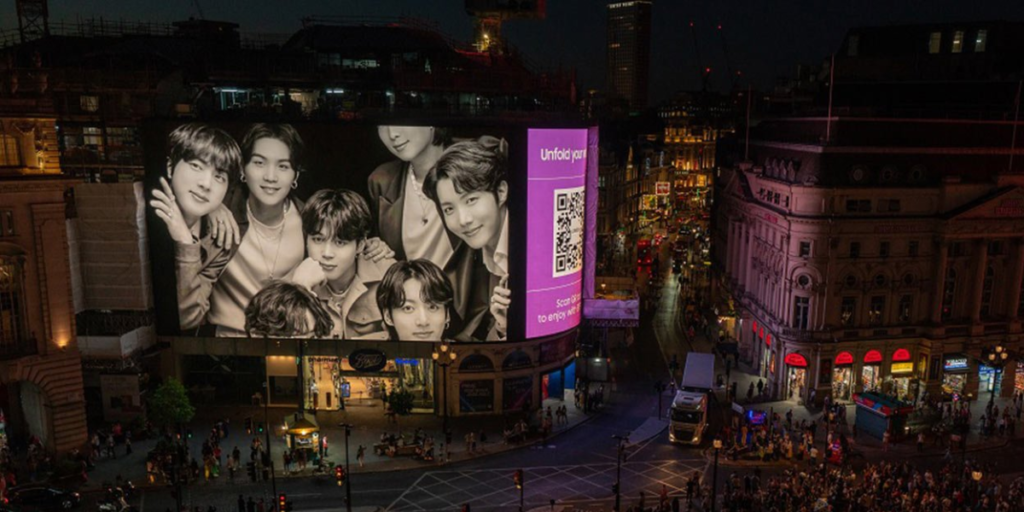
QR Codes (Quick Response codes) have seen a surge in importance for businesses, thanks to their versatility, efficiency, and seamless integration with mobile technology.
As of 2024, the United States leads the world in QR code usage, with its share of global scans rising from 42.2% in 2022 to 43.9% in 2023.
This notable increase of 10.72% is expected to continue growing in the coming years.
Additionally, dynamic QR codes generated by users saw 6,825,842 scans globally in 2024, representing a 433% increase from 2021.
This indicates a growing trend of people using QR codes for various purposes, including marketing, payments, and information sharing.
Notably, contactless payments in the US have surged by 150% since March 2019, and by 2024, 80% of transactions and checkout services are projected to be contactless.
Here’s a look at why QR Codes are becoming indispensable in the business world:
1. Enhanced customer engagement
– Interactive marketing: QR Codes allow businesses to create engaging marketing campaigns. Customers can scan codes to access videos, websites, social media, or special offers, providing a richer and more interactive user experience.
– Feedback and reviews: Companies can place QR Codes on receipts or product packaging to encourage customers to leave reviews or provide feedback, improving customer satisfaction and refining business operations.
2. Improved operational efficiency
– Inventory management: QR Codes streamline inventory management by enabling quick and accurate scanning of items for tracking and logging. This reduces errors and boosts efficiency in warehouses and retail settings.
– Document management: QR Codes can link to digital documents, making managing and accessing important information easier without relying on physical storage.
3. Contactless solutions
– Payments: QR Codes facilitate contactless payments, which have become crucial, especially during the COVID-19 pandemic. Customers can scan codes to complete transactions securely and hygienically.
– Menus and ordering: Restaurants and cafes can use QR Codes for digital menus and ordering systems, minimizing physical contact and enhancing the dining experience.
4. Cost-effective marketing and communication
– Advertising: QR Codes can be printed on various advertising materials like posters, flyers, and business cards, providing an affordable way to connect offline marketing with online content.
– Event management: QR Codes on event tickets or badges streamline check-in and provide easy access to event information and schedules.
5. Data collection and analytics
– Consumer insights: By tracking QR Code scans, businesses can gather valuable consumer behavior and preferences data, enabling more targeted marketing strategies.
– Real-time analytics: QR Code scans provide real-time data, allowing businesses to adjust their strategies based on current trends and feedback quickly.
6. Branding and trust
– Authenticity verification: QR Codes can verify the authenticity of products, helping to combat counterfeiting and build customer trust.
– Transparency: Providing detailed product information, such as ingredients or sourcing details, via QR Codes enhances transparency and strengthens the brand image.
7. Environmental benefits
– Paper reduction: By linking to digital content, QR Codes reduce the need for printed materials, supporting environmental sustainability efforts.
– Efficient communication: Businesses can quickly update the information linked to a QR Code without reprinting materials, reducing waste and costs.
The worldwide value of mobile payment transactions is projected to hit $6.3 trillion by 2024. Source: Statista
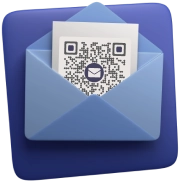

E. How QR Codes enhance business operations?

1. Facilitating easy access to information
– Instant information access: QR Codes can be placed on products, brochures, or signs to provide instant access to detailed information, such as product specs, usage instructions, or service details, enhancing customer knowledge and satisfaction.
– Training and onboarding: New employees can scan QR Codes to access training modules, company policies, and procedures, making onboarding faster and more efficient.
2. Boosting customer loyalty programs
– Seamless rewards: QR Codes can be used to simplify loyalty programs. Customers can scan codes to collect points, redeem rewards, and access exclusive offers, fostering loyalty and repeat business.
– Personalized offers: Businesses can use QR Codes to link to personalized discounts or promotions based on customer data, increasing engagement and sales.
3. Enabling efficient communication
– Quick contact information: QR Codes on business cards or advertisements can instantly provide contact information, social media links, or website URLs, making it easier for customers and partners to connect with the business.
– Customer support: QR Codes on products or packaging can link to customer support channels, FAQs, or troubleshooting guides, enhancing customer service and satisfaction.
4. Streamlining reservation and booking systems
– Quick reservations: Restaurants, hotels, and event venues can use QR Codes for easy reservation and booking processes, reducing the time and effort required for customers to make arrangements.
– Check-in and check-out: QR Codes can facilitate quick check-in and check-out processes, improving the efficiency and experience in hospitality and event management sectors.
5. Enhancing security and access control
– Secure access: QR Codes can be used to manage secure access to buildings, events, or restricted areas, ensuring that only authorized personnel or attendees can enter.
– Time tracking: Businesses can use QR Codes to track employee attendance and working hours, simplifying payroll processes and improving accuracy.
6. Promoting contactless interactions
– Touchless product info: In retail, QR Codes can provide touchless access to product details, reducing the need for physical contact and enhancing hygiene.
– Virtual tours: Real estate agents and museums can use QR Codes to offer virtual tours, allowing potential buyers or visitors to explore properties or exhibits remotely.
7. Enhancing event experiences
– Interactive exhibits: QR Codes at events or exhibitions can link to additional content, videos, or interactive displays, providing a richer and more engaging experience for attendees.
– Networking opportunities: Event participants can use QR Codes to quickly exchange contact information and connect on professional networks, facilitating better networking.
8. Supporting marketing analytics
– Campaign tracking: QR Codes can track the effectiveness of marketing campaigns by monitoring scan rates and user interactions, providing valuable insights into campaign performance.
– Customer behavior analysis: Data collected from QR Code scans can help businesses understand customer behavior and preferences, allowing for more targeted and effective marketing strategies.
F. How to choose the best QR Code business for your company
Choosing the best QR Code business or provider for your company involves careful consideration of several factors to ensure you select a solution that meets your needs and enhances your operations effectively.
Here’s a guide to help you make the right choice:
1. Identify your needs
– Usage: Determine what you need QR Codes for – marketing, payments, inventory management, customer feedback, etc.
– Volume: Estimate the number of QR Codes you’ll need and how often you’ll need to generate them.
2. Features and capabilities
– Customization: Look for providers that offer customization options such as branded QR Codes with your company logo, colors, and unique designs.
– Dynamic vs. static: Decide whether you need static QR Codes (fixed content) or dynamic QR Codes (content can be changed without altering the QR Code itself).
– Analytics: Ensure the provider offers robust analytics to track scans, locations, and user data for better insights and decision-making.
– Integration: Check if the QR Code solution can integrate with your existing systems such as CRM, POS, or inventory management software.
3. Ease of use
– User interface: Choose a provider with an intuitive and user-friendly interface that allows you to easily create and manage QR Codes.
– Support and resources: Look for providers that offer comprehensive support, including tutorials, customer service, and technical assistance.
4. Security and reliability
– Data security: Ensure the provider follows industry best practices for data security and privacy, especially if you’ll be collecting customer data.
– Reliability: Choose a provider with a track record of reliability and uptime, ensuring your QR Codes are always accessible.
5. Cost and pricing plans
– Budget: Consider your budget and compare pricing plans from different providers. Look for transparent pricing without hidden fees.
– Free trials and demos: Opt for providers that offer free trials or demos so you can test their services before committing.
6. Scalability
– Growth potential: Choose a provider that can scale with your business as it grows, offering additional features and capacity as needed.
– Adaptability: Ensure the provider can adapt to your changing needs and emerging technologies.
7. Reviews and reputation
– Customer feedback: Research reviews and testimonials from other businesses to gauge customer satisfaction and the provider’s reputation.
– Case studies: Look for case studies or success stories that demonstrate how the provider’s QR Code solutions have benefited other businesses similar to yours.
8. Compliance and standards
– Regulatory compliance: Ensure the provider complies with relevant industry standards and regulations, such as GDPR for data protection if you operate in Europe.
– Best practices: Choose a provider that adheres to best practices in QR Code generation and management.
9. Additional services
– Value-added services: Some providers offer additional services like campaign management, creative services, or advanced analytics, which can add value to your investment.
– Education and training: Providers that offer training sessions or educational resources can help you and your team get the most out of their QR Code solutions.
G. Tips for effective QR Code implementation
Implementing QR Codes effectively can greatly enhance your business operations, from boosting customer engagement to streamlining internal processes.
Here are some tips to ensure your QR Code implementation is successful:
1. Define clear objectives
– Purpose: Clearly define your goals for using QR Codes, whether it’s driving traffic to your website, gathering customer feedback, enabling contactless payments, or managing inventory more efficiently.
– Measurable goals: Set specific, measurable objectives to evaluate the success of your QR Code initiatives.
2. Design with user experience in mind
– Visibility: Place QR Codes in easily visible and accessible locations for your target audience.
– Instructions: Provide simple, clear instructions to guide users on how to scan the QR Code, especially for those who might be unfamiliar with the technology.
3. Customize for brand consistency
– Branding: Customize QR Codes with your logo, brand colors, and unique designs to align with your brand identity.
– Aesthetics: Ensure the design is visually appealing and not overly complex, to maintain scannability.
4. Ensure scannability
– Size: Make sure the QR Code is large enough to be easily scanned, especially on printed materials.
– Contrast: Use high-contrast colors between the QR Code and its background to enhance readability.
– Testing: Test the QR Codes on different devices and from various distances to ensure they work effectively.
5. Provide value to users
– Content: Ensure the content or action linked to the QR Code provides real value to users, such as exclusive offers, useful information, or convenient services.
– Relevance: Keep the content relevant to the context where the QR Code is placed. For instance, a QR Code on product packaging might link to usage instructions or recipes.
6. Optimize for mobile
– Mobile-friendly: Ensure the landing pages or content linked to the QR Code are optimized for mobile devices, providing a seamless user experience.
– Load times: Minimize load times for mobile pages to keep users engaged.
7. Track and analyze performance
– Analytics: Use QR Code tracking tools to monitor scan rates, user locations, and interaction times. This data provides insights into user behavior and campaign effectiveness.
– Adjustments: Use the collected data to make necessary adjustments and improvements to your QR Code strategy.
8. Promote security and trust
– Secure links: Ensure that the links embedded in QR Codes are secure and direct users to legitimate content.
– Transparency: Be clear about what users can expect after scanning the QR Code to build trust and encourage usage.
9. Integrate with other channels
– Multi-channel strategy: Integrate QR Codes with other marketing channels such as social media, email campaigns, and physical advertising to create a cohesive marketing strategy.
– Consistent messaging: Ensure the messaging and branding are consistent across all channels where QR Codes are used.
10. Educate and inform
– User education: Educate your audience on the benefits of scanning QR Codes and how to use them through signage, tutorials, or promotional materials.
– Employee training: Train your employees on how to use and promote QR Codes, so they can assist customers effectively.
H. Best practices for maximizing QR Code utility
1. Segmentation and personalization
– Targeted content: Tailor QR Code campaigns to specific audience segments based on demographics, interests, or purchasing behavior.
– Personalized offers: Use QR Codes to deliver personalized offers, discounts, or recommendations that resonate with individual customers.
2. Use QR Codes in product packaging
– Enhanced packaging: Integrate QR Codes into product packaging to provide additional information, usage tips, or links to instructional videos, enhancing the overall customer experience.
– Reorder convenience: Include QR Codes on packaging for easy reordering or access to related products or accessories.
3. Interactive in-store experiences
– Product demonstrations: Use QR Codes in-store to provide interactive product demonstrations, comparisons, or reviews to help customers make informed purchasing decisions.
– Virtual try-on: Implement QR Codes for virtual try-on experiences for apparel, cosmetics, or accessories, allowing customers to visualize products before buying.
4. Event engagement
– Networking opportunities: Use QR Codes at events for attendee registration, networking, and exchanging contact information, streamlining the event experience for participants.
– Session access: Provide QR Codes for session access and materials at conferences or workshops, ensuring attendees have easy access to relevant information.
5. Education and training
– Employee training modules: Implement QR Codes for accessing training modules, instructional videos, or knowledge bases, enabling convenient and on-the-go learning for staff.
– Customer education: Use QR Codes to educate customers about product features, benefits, or maintenance tips, enhancing product understanding and satisfaction.
6. Lead generation and conversion tracking
– Lead capture forms: Use QR Codes to direct potential customers to lead capture forms or landing pages, allowing for seamless lead generation and follow-up.
– Conversion tracking: Track conversions from QR Code scans to measure the effectiveness of marketing campaigns and optimize future strategies accordingly.
7. Localization and internationalization
– Multilingual content: Provide QR Codes with content in multiple languages to cater to diverse customer demographics and enhance accessibility for international audiences.
– Localized offers: Customize QR Code promotions or offers based on geographic location or cultural preferences to resonate with local audiences effectively.
8. Integration with loyalty programs
– Rewards redemption: Enable QR Codes for customers to redeem loyalty points, discounts, or rewards, fostering loyalty and encouraging repeat purchases.
– Membership enrollment: Use QR Codes for streamlined enrollment processes into loyalty programs, making it easy for customers to join and start earning rewards.
9. Emergency and safety information
– Emergency contact information: Implement QR Codes for providing emergency contact details, evacuation procedures, or safety guidelines in public spaces or workplaces.
– Medical information: Use QR Codes on employee badges or medical alert bracelets to provide quick access to medical history, allergies, or emergency contacts.
10. Feedback and survey collection
– Post-purchase surveys: Use QR Codes on receipts or packaging to prompt customers to provide feedback or participate in satisfaction surveys, gaining valuable insights for service improvement.
– Event feedback forms: Distribute QR Codes at events for attendees to submit feedback or event evaluations, facilitating continuous improvement for future events.
British Airways has eliminated the need for boarding passes by offering passengers the option to use QR Codes instead. Additionally, the company recently introduced electronic bag tags, removing the necessity to print them. Source: headforpoints
I. FAQs: Top QR Code companies
1. How do I choose the best QR Code company for my business?
When choosing a QR Code company, consider factors such as your specific needs, features offered (customization, analytics, security), ease of use, pricing, customer support, and reputation.
2. What features should I look for in a QR Code company?
Look for features such as customization options (branded QR Codes, design flexibility), analytics and tracking capabilities, security measures (secure links, data encryption), ease of use (intuitive interface, mobile optimization), and integration with other tools or platforms.
3. Are there free QR Code companies available?
Yes, many QR Code companies offer free plans with basic features such as QR Code generation and scanning. However, for advanced features and customization options, you may need to upgrade to a paid plan.
4. Can QR Code companies assist with QR Code strategy and implementation?
Yes, some QR Code companies offer consulting services or educational resources to help businesses develop effective QR Code strategies and implement them successfully.
5. Are QR Code companies reliable and secure?
Generally, reputable QR Code companies prioritize reliability and security, using HTTPS links, data encryption, and adhering to industry best practices to protect user data and ensure the integrity of QR Code campaigns.
6. How can I track the performance of QR Codes generated by a company?
Most QR Code companies provide analytics tools that allow you to track various metrics such as scan rates, user locations, device types, and interaction times. This data can help you evaluate the effectiveness of your QR Code campaigns and make informed decisions.
7. Can QR Code companies integrate with other marketing tools or platforms?
Yes, many QR Code companies offer integration capabilities with popular marketing tools, CRMs, POS systems, and other platforms, allowing for seamless data sharing and workflow automation.
8. What level of customer support can I expect from QR Code companies?
The level of customer support varies among QR Code companies, but reputable providers typically offer responsive customer support through various channels such as email, live chat, phone, or help center resources.
9. How can I find reviews or testimonials about QR Code companies?
You can find reviews, testimonials, or case studies about QR Code companies on their websites, review platforms, social media channels, or industry forums. Additionally, you can ask for recommendations from peers or industry experts.
Summing Up
As we wrap up our deep dive into the top QR Code companies, you’re now equipped with the knowledge and insight to make an informed decision for your business.
Whether you’re prioritizing customization, analytics, security, scalability, integration, or stellar customer support, remember that the perfect QR Code partner is out there, waiting to help elevate your brand to new heights.
As you continue your journey, keep your objectives in focus and don’t hesitate to lean on the expertise of industry leaders to refine your strategy and achieve your goals.
If you’re still reading, you’ve learned everything about top QR Code companies. If you have any questions, let us know in the comments.
